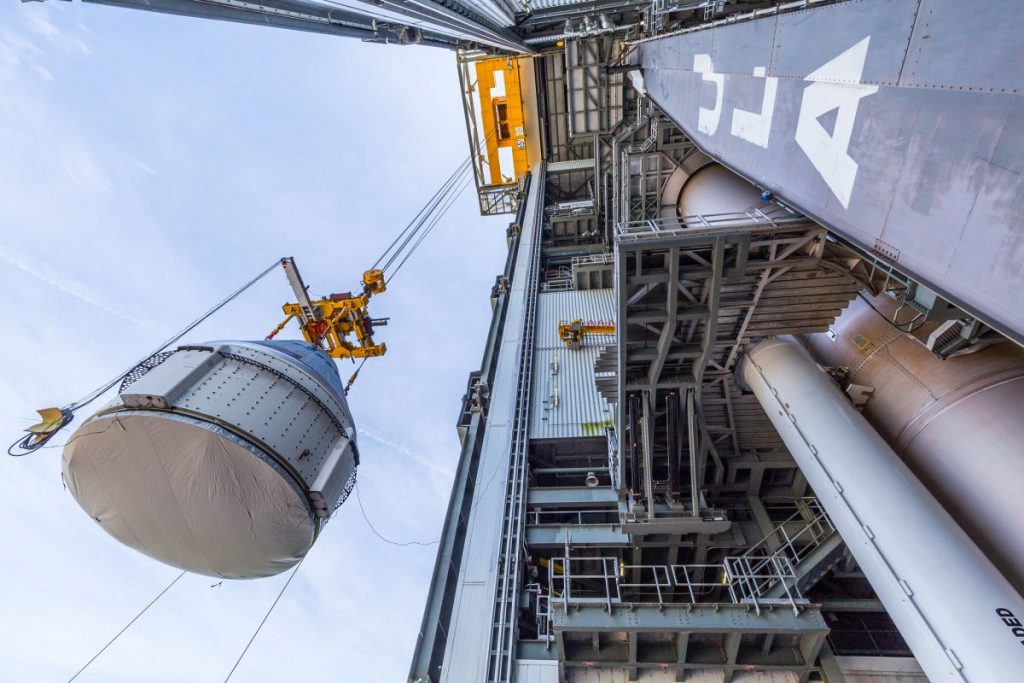Boeing’s CST-100 Starliner capsule has joined up with its rocket ride.
Technicians stacked Starliner atop its United Launch Alliance (ULA) Atlas V rocket Wednesday (May 4) at ULA’s Vertical Integration Facility (VIF) at Cape Canaveral Space Force Station in Florida.
ULA and Boeing are gearing up for Orbital Flight Test 2 (OFT-2), a crucial uncrewed test mission to the International Space Station (ISS) that’s scheduled to launch on May 19. If all goes well with OFT-2, Starliner will likely be cleared to carry NASA astronauts to and from the orbiting lab in the near future.
In photos: Boeing’s Starliner OFT-2 mission in pictures
Starliner rolled to the VIF Wednesday from Boeing’s Commercial Crew and Cargo Processing Facility at NASA’s Kennedy Space Center, which is next door to Cape Canaveral Space Force Station. The capsule made the trip atop ULA’s motorized payload transporter, traveling at a top speed of 5 mph (8 kph), ULA representatives said.
“Approaching the VIF, the transporter maneuvered up to the 30-story-tall building’s doorway and parked,” ULA wrote in statement Wednesday. “A four-point lifting sling, called the Handling Fixture Hoist Tool, was connected to the Starliner for the overhead crane to carefully raise the spacecraft onto the Atlas V waiting inside the VIF aboard its mobile launch platform.”
As its name suggests, OFT-2 will be Boeing’s second try at an uncrewed test mission to the ISS. The first, which lifted off in December 2019, was cut short after Starliner suffered several software glitches and was unable to meet up with the orbiting lab.
OFT-2, which will use a different Starliner vehicle than the original OFT, has encountered some issues of its own. The mission was originally supposed to launch last August, but preflight checks revealed stuck valves in the capsule’s service module.
After a lengthy investigation, Boeing and NASA teams identified the cause — oxidizer reacted with humidity in the air, generating nitric acid, which then created corrosion products that impeded valve function — and came up with mitigation measures. And Starliner is now getting ready for liftoff once again.
Boeing holds a contract with NASA’s Commercial Crew Program and aims to begin flying astronauts with Starliner toward the end of 2022 if OFT-2 goes well. SpaceX holds a similar deal and is already up and running with its Dragon capsule and Falcon 9 rocket; Elon Musk’s company launched its fourth operational astronaut mission for NASA, known as Crew-4, on April 27.
Mike Wall is the author of “Out There” (Grand Central Publishing, 2018; illustrated by Karl Tate), a book about the search for alien life. Follow him on Twitter @michaeldwall. Follow us on Twitter @Spacedotcom or on Facebook.

